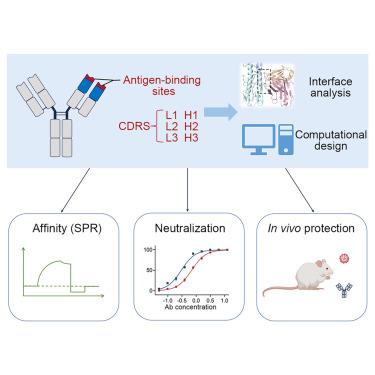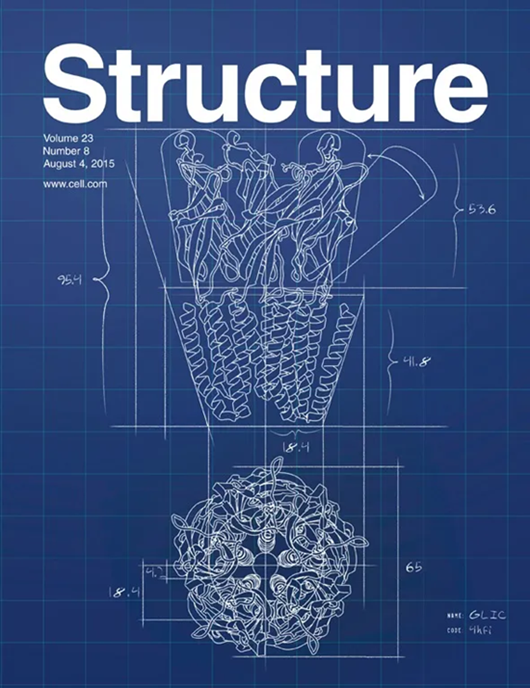Computational design and improvement of a broad influenza virus HA stem targeting antibody
IF 4.4
2区 生物学
Q2 BIOCHEMISTRY & MOLECULAR BIOLOGY
引用次数: 0
Abstract
Broadly neutralizing antibodies (nAbs) are vital therapeutic tools to counteract both pandemic and seasonal influenza threats. Traditional strategies for optimizing nAbs generally rely on labor-intensive, high-throughput mutagenesis screens. Here, we present an innovative structure-based design framework for the optimization of nAbs, which integrates epitope-paratope analysis, computational modeling, and rational design approaches, complemented by comprehensive experimental assessment. This approach was applied to optimize MEDI8852, a nAb targeting the stalk region of influenza A virus hemagglutinin (HA). The resulting variant, M18.1.2.2, shows a marked enhancement in both affinity and neutralizing efficacy, as demonstrated both in vitro and in vivo. Computational modeling reveals that this improvement can be attributed to the fine-tuning of interactions between the antibody’s side-chains and the epitope residues that are highly conserved across the influenza A virus HA stalk. Our dry-wet iterative protocol for nAb optimization presented here yielded a promising candidate for influenza intervention.

求助全文
约1分钟内获得全文
求助全文
来源期刊

Structure
生物-生化与分子生物学
CiteScore
8.90
自引率
1.80%
发文量
155
审稿时长
3-8 weeks
期刊介绍:
Structure aims to publish papers of exceptional interest in the field of structural biology. The journal strives to be essential reading for structural biologists, as well as biologists and biochemists that are interested in macromolecular structure and function. Structure strongly encourages the submission of manuscripts that present structural and molecular insights into biological function and mechanism. Other reports that address fundamental questions in structural biology, such as structure-based examinations of protein evolution, folding, and/or design, will also be considered. We will consider the application of any method, experimental or computational, at high or low resolution, to conduct structural investigations, as long as the method is appropriate for the biological, functional, and mechanistic question(s) being addressed. Likewise, reports describing single-molecule analysis of biological mechanisms are welcome.
In general, the editors encourage submission of experimental structural studies that are enriched by an analysis of structure-activity relationships and will not consider studies that solely report structural information unless the structure or analysis is of exceptional and broad interest. Studies reporting only homology models, de novo models, or molecular dynamics simulations are also discouraged unless the models are informed by or validated by novel experimental data; rationalization of a large body of existing experimental evidence and making testable predictions based on a model or simulation is often not considered sufficient.
 求助内容:
求助内容: 应助结果提醒方式:
应助结果提醒方式:


